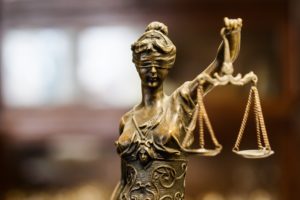Implicit Bias and Law Enforcement
It is said that implicit bias, then, includes both implicit stereotypes and implicit attitudes and is shaped by both history and cultural influences(for example, upbringing; life experiences; relationships; and all manner of media—books, movies, television, newspapers, and so on).
Share This Post
By Tracey G. Gove, Captain, West Hartford, Connecticut, Police Department
Racial profiling has been an obvious point of contention between law enforcement and minority group members. Over the past decade, the term “bias-based policing” has been coined, and the subject has been the topic of much research and debate. It often paints the picture of ill-intentioned officers deliberately acting upon preconceived stereotypes and prejudices. What if, perhaps, there was another answer?
In the spring of 2010, professor Jerry Kang from the UCLA School of Law presented to Connecticut judges, prosecutors, public defenders, and police administrators on the topic of implicit, or hidden, bias. His talk shed light on what has become an increasingly popular subject in social science circles. In brief, researchers contend that implicit biases are predilections held by all that operate largely outside of one’s awareness. Although hidden, these biases are both pervasive and powerful. Much research on the topic has focused on racial bias and has netted some intriguing results.
While the science does have its detractors, the growing research and potential implications for the criminal justice field make this a topic with which all law enforcement personnel should be familiar. The reader may find this article to be interesting, provocative, and enlightening—or some combination of the three. The purpose of this piece is to raise awareness on a topic that is growing in popularity and that has begun to emerge in the criminal justice system. It is up to readers to decide whether the science is relevant and pertinent to their lives and their workplaces.
The article discusses implicit bias, the latest testing and research into the phenomenon, and practical approaches for law enforcement interventions as recommended by social scientists in the field.
Implicit Bias
The implicit bias phenomenon is being explored in many phases of the criminal justice system and is not limited to law enforcement. Specifically, implicit bias is being studied in judicial decision making (for example, jury selection, jury instruction, and sentencing decisions), as well as in hiring and promotion decisions within criminal justice agencies. Outside of the criminal justice field, the topic has been examined in the fields of education and medicine, as well as in CEO selection at Fortune 500 companies.
A discussion on implicit bias must start with a brief explanation of how the brain sorts, relates, and processes information. Much of the day-to-day processing is done at an unconscious level as the mind works through what Professor Kang calls schemas, which are “templates of knowledge that help us organize specific examples into broad categories. A stool, sofa, and office chair are all understood to be ‘chairs.’ Once our brain maps some item into that category, we know what to do with it—in this case . . . sit on it. Schemas exist not only for objects, but also for people. Automatically, we categorize individuals by age, gender, race, and role. Once an individual is mapped into that category, specific meanings associated with that category are immediately activated and influence our interaction with that individual.”
When used to categorize people, these schemas are called stereotypes. Although the term stereotype carries a negative connotation, social scientists posit that stereotyping is simply the way the brain naturally sorts those we meet into recognizable groups. Attitudes, on the other hand, are the overall evaluative feelings, positive or negative, associated with these individuals or groups. That is to say, attitude is the tendency to like or dislike, or to act favorably or unfavorably, toward someone or something.
For example, “[I]f we think that a particular category of human beings is frail—such as the elderly—we will not raise our guard.” Also, “[I]f we identify someone as having graduated from our beloved alma mater, we will feel more at ease.” Lastly, when introduced to someone new, about whom nothing is known but who is reminiscent of an old, admired friend, one may instantly feel comfortable and at ease with that person.
It is said that implicit bias, then, includes both implicit stereotypes and implicit attitudes and is shaped by both history and cultural influences(for example, upbringing; life experiences; relationships; and all manner of media—books, movies, television, newspapers, and so on). Research has shown that a person’s previous experiences (both positive and negative) leave a “memory record.” Implicit biases encompass the myriad fears, feelings, perceptions, and stereotypes that lie deep within the subconscious; they act on those memory records and exist without an individual’s permission or acknowledgement. In fact, implicit bias can be completely contradictory to an individual’s stated beliefs—a form of conscious-unconscious divergence.
To read the full article click here.
Read more Posts

The Transformational Power of Resistance
Are organizations that go through these motions but fall short of impactful follow-through demonstrating laziness or a lack of integrity?

Strategies for Mitigating Implicit Bias in the Legal Field
Unconscious bias can have a range of implications and potential consequences for legal professionals, including shaping interpersonal dynamics with prospective and current clients and colleagues and, in turn, influencing organizational dynamics at the smallest law practices and the largest firms alike.
